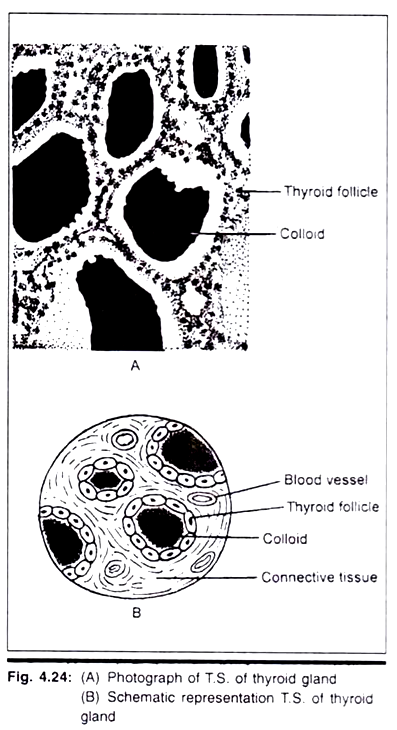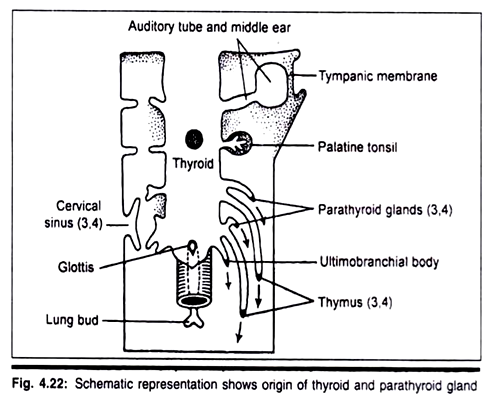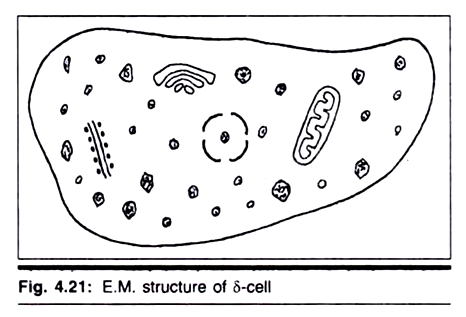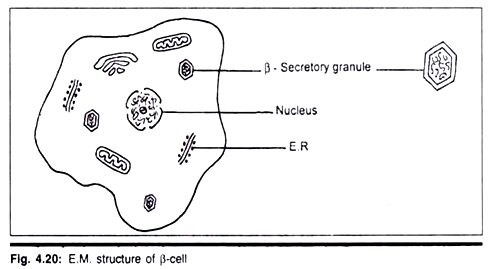ADVERTISEMENTS:
In this article we will discuss about the methods and success of plant biotechnology.
Methods in Plant Biotechnology:
i. Tissue and Cell Culture:
This technique helps in maintaining plant tissues for prolonged periods on an artificial culture/basal medium. Small group of cells is isolated and inoculated on a culture medium comprising carbohydrate source, vitamins, minerals and defined nitrogenous source(s) under sterilized lab conditions.
It is possible to cultivate any plant species using variable explants e.g. stem segment, leaf segment, pedicel, petiole, anther, pollen, microspores, petiole, cotyledons, endoperm, etc. Callus derived from a single initial group of cells can be sub-cultured, multiplied and in some instances induced to reinitiate differentiation of roots and shoots and thus form plantlets (Fig. 30-1). The latter are hardenend and then transferred to the soil.
Plant tissue culture is carried out on solid or liquid media. In the solid medium, agar or several other solidifying substance are added. In instance where tissue or lumps are agitated, they are disrupted from mass and then grown as clumps.
With a defined nutrition, phytochormones, specific light condition, some cells in culture differentiate into embryos called somatic embryos and these mature into plantlets comparable to the parent plant.
The somatic embryos of some plant species are used to raise artificial seeds which contains embryo enclosed in a gelatinous matrix (29-Plate 1). Currently, they are expensive but gradually they will become cost-effective when large scale production will be feasible. Presently only vegetable crops and ornamental plants are tackled.
Protoplast has been used for the study of several aspects in plant and cell biology; protoplast fusion, leading to somatic hybrids i.e. hybrids without involving fertilization or germ cells. Protoplast fusion also enables one to raise hybrids between genetically incompatible plants species.
ADVERTISEMENTS:
Plants have cytoplasmic genomes that are maternally inherited and some of the genes are atrazine resistant are in the chloroplast, so is also cytoplasmic male sterility in the mitochondria, can be accomplished through protoplast fusion.
Such accomplishments have basic and applied importance. Protoplast fusion makes it possible to raise cytoplasmic-nuclear combinations without resorting to backcrossing required in traditional breeding. Removal of cell wall helps in direct transfer of genes into the plant cells.
ii. Recombinant DNA:
DNA recombination is insertion of DNA from one genome into DNA of another genome. It is a novel approach for recombination between unrelated organisms. Under natural conditions, recombination is only feasible between closely related species and has a minimal impact on the diversification of genetic information.
Comparatively rDNA technology is accomplished under in vitro conditions, permitting to overcome natural genetic barriers to recombine DNA from absolutely different species. Selection of specific DNA sequences, genes, for insertion into the host DNA is rapid and efficient than conventional method of plant breeding. Through this technique a foreign gene is introduced into a genome artificially and the resultant plant is said to be genetically engineered.
Three components are involved in genetic engineering and these are:
i. Source of ‘foreign’ gene—DNA sequence containing desired trait.
ii. A vector that carries the gene.
iii. A means of introducing the vector into the host plant.
Two methods are used to isolate gene. First, DNA having a specific gene of desire is cut into small fragments (restriction fragments) through specific enzymes i.e. restriction endonucleases.
ADVERTISEMENTS:
The latter enzymes are isolated from bacteria that recognize and cleavage the double stranded DNA at specific sequences of four to eight nucleotides. The enzyme cleavages the entire genome of the cell from which the DNA was isolated, and this technique has the advantage of yielding large number of DNA fragments.
Many of these fragments will have only a portion of a gene or regions that are not normally transcribed. However, different species of bacteria produce many restriction enzymes with different specifies so it is feasible to produce a fragment having a particular gene of intention.
Second, mRNA is isolated from cells and used for direct synthesis of complimentary DNA (cDNA). The latter is synthesized from mRNA by reverse transcriptase, which uses mRNA as a temple to molecule.
In the next step the desired DNA is inserted into a vector which is usually double-stranded bacterial DNA called plasmid. Endonucleases are used to cut the plasmid and open it up (Fig. 30-2).
ADVERTISEMENTS:
The ends of DNA are open where complementary plasmid DNA is inserted permitting the two DNA molecules to be mixed together. Their ends are joined with the DNA ligase. Thus, plasmid is a recombinant one having foreign gene and ready to be introduced into the host cells.
Ti plasmid is most commonly used as a vector to introduce foreign gene. Ti plasmid is from bacterium Agrobacterium tumifaciens which causes crown gall. In Ti plasmid there is a region called T-DNA which is normally integrated into the host cell DNA during infection.
T-DNA has the tumor- inducing genes that transform infected tissue into crown gall. The plasmid is usually ‘disarmed’ by clipping off the tumor-inducing genes and replacing them with the gene intended to be cloned.
ADVERTISEMENTS:
Thus, the bacterium is made avirulent but it retains its capacity to infect and transform host plant cells. The vector plasmid also contains a gene for antibiotic resistance e.g. kanamycin resistance that permits selection of transformed cells.
Plant transformation is done either by co-cultivation with protoplast or by infection of leaf disks. In the former, dividing protoplasts are inoculated with bacteria having recombinant plasmid. After two or three days the bacteria are killed using antibiotics and protoplasts are permitted to divide further in clumps called microcalli. These are transferred to a medium containing antibiotic e.g. kanamycin.
Transformed calli carrying the resistant gene survive the antibiotic treatment. In the latter procedure, small disks cut from leaf surface are sterilized and incubated with a culture of A. tumifaciens permitting the bacteria to infect the wound cells of leaf cut surface. Again the bacteria are killed with antibiotic and recombined cells are selected.
Medium with determined nutrients and phytohormones is used to induce root and shoot formation. This is how a transformed plantlet is secured which carries and expresses the new gene and the introduced gene is passed to the next progeny.
ADVERTISEMENTS:
In tumifaciens transformations the success rate is low and in monocots the accomplishments are nearly nil. There are other techniques which are used for the transfer of the foreign gene(s) and these are direct transfer method through particle gun, electroporation (which makes the cell permeable), microinjection of DNA, etc.
Successes and Potential of Plant Biotechnology:
i. Micro-Propagation:
Technique of micro-propagation is profusely used to raise large scale plant species. Here excised meristem is used and cultured in basal medium with nutrients, hormones and carbohydrate and nitrogen sources in an aseptic surroundings at low temperature.
Even axillary buds are used and new shoots produced are separated and sub-cultured to raise more axillary shoots and these are rooted and separate plantlets are obtained. Tissues can also be used to raise callus and subsequent organogenesis is induced to secure plantlets.
This technique has been successfully used to eliminate viruses and other pathogens from the micro-propagated plantlets and used for commercial purposes. The technique is of routine use in lilies, orchids, potato, vegetatively propagated plant species, some trees, etc.
In potato, sugarcane this technique is being exploited commercially to raise virus and pathogen-free plants and sell them commercially. Axillary and adventitious buds are used to raise plants in some timber trees, fruit cultivars and several of temperate fruit trees like apple, pear, peach are micro-propagated.
Sometime the micro-propagated plants show variable genetic traits due to somaclonal variation though it is not known how such types of chromosomal or genie variations are induced.
ii. Plant Protection:
ADVERTISEMENTS:
Productivity or yield in a crop species depends on several factors including plant protection against various pathogens or insecticides. Further, weeds also reduce the yield by competiting with the crop plants. Through genetic engineering novel methods of crop protection against severe pests have been developed and chemical pesticides have been done away with.
iii. Herbicide Resistances:
In the crop productivity the weeds ground the crop plants reduce yield. Farmers, therefore, use herbicides for effective controlling them. This has led to side effects and some of the species have become herbicide resistant.
The gene for some enzymes has been introduced in some crop species and resistance against some herbicides has been engineered. Different approaches are used to introduce herbicide tolerance against various herbicides like glyphosate, glufosinate, atrazine, bromoxynil, oryzalin.
Resistance to Abiotic Stresses:
Poor harvest is attributed to drought, salinity, heat, flooding and freezing. Plants containing protective proteins or enzymes from other organisms which help the crop varieties to grow under adverse conditions are engineered. Osmolytes and osmoprotectants and saturation levels of membrane fatty acids are altered. Further the rate of scavenging of reactive oxygen intermediates is changed in transgenics.
ADVERTISEMENTS:
Genes concerned with stress relief are introduced into various crop species achieving good degree of abiotic stress tolerance. Low molecular mass osmoprotectants and osmolytes e.g. amines, proline, sugar alcohols provide tolerance against stresses.
Thus, choline dehydrogenase has been isolated from E.coli and introduced in potato, tobacco and there is biosynthesis of glycine betaine and transgenic plants develop salt and freezing tolerance.
LEA (late embryogenesis abundant) proteins are encoded by HVA1 gene (from barley) and this is activated under abiotic stress and causes protective effect against osmotic stress. W-3-fatty acid desaturate (encoded by FAD 7 gene) and D9- desaturase (encoded by DES9 gene) leads to unsaturated fatty acids having cis-double bonds in membrane lipid especially in plastid membranes.
This confers chilling tolerance in many plant species. Antifreeze (afp) protein in some arctic fish induces chilling tolerance. In strawberry it inhibits ice crystal formation under chilling conditions. Another gene for glyoxylase-1 is shown to confer resistance against salt stress.
iv. Insect Pests and Disease Resistance:
Crop losses are incurred due to insect and plant diseases. It leads to enormous economic loses. Clearly management of pests is of prime importance in world agriculture. Traditional insecticides can kill the pests but also cause destruction of useful insects, and pollute the soil and subsoil water.
Several strategies have been adopted to engineer disease resistance e.g.,introduction of Bt gene (to act as natural bio-pesticide) into the chloroplast of host plant. Introduction of genes which synthesize inhibitors of proteases and α-amylase, synthesis of chitinase, etc. which interfere with insect metabolism and development.
Lectins in pea are harmless to mammals and have been introduced into sweet potato and rice to achieve resistance to weevils and brown planthopper. Recently several novel insecticidal proteins have been discovered which have potential to act in combination with Sr-ICPs and prevent development of resistance in insects.
Nutritional quality of the foods is of great concern especially in the developing world. Plant biotechnology provides immense scope to improve the food quality in terms of proteins, amino acids, vitamins, oil and starch for human health and well-being.
Legume proteins by and large lack the sulphur containing amino acids-methionine and cysteine and cereal proteins lack lysine and tryptophan.
There are two main approaches to improve the nutritional quality of plant proteins; modification of the amino acid composition of the plant proteins and introduction of transgenes encoding proteins of high nutritive value.
Thus, phaseolin in french bean seed constitutes around 40% of the total protein but has only three methionine residues. Now a modified phaseolin has been synthesized by the insertion of 45bp oligonucleotides having six methionine codones into the third exon of the phaseolin gene.
Similarly expression and accumulation of Brazil nut 2S albumin protein in transgenics rape seed, soybean, French bean seeds and potato has also been reported.
Sadly, the Brazil nut albumin was found to be allergic and hence sunflower 10 kDa albumin protein rich in methionine is used and it is not an allergen. Recently a gene has been introduced into potato and the level of accumulation of A1was found to be high and this gene causes well-balanced amino acid composition.
Soybean glycinin gene has been introduced into rice to enhance its protein content and make it more digestable. Gne encoding a human milk protein b-caesin was expressed in transgenic potato under the control of auxin-inducible promoter.
These findings open the way for reconstitution of human milk proteins in plant foods. Successful efforts have been made to increase the iron content of transgenic tobacco by introducing yeast ferric reductase gene. Iron content increased by fifty per cent in the transformed plant. Another gene encoding soybean ferritin was introduced in rice under the control of glutelin promoter to express the protein in a seed-specific manner.
The most highly consumed vegetable oils e.g. soybean, corn and rapeseed contain high levels of tocopherols but poor in a-tocopherols. Tint gene of Arabidopsis was isolated and overexpressed in a seed-specific manner and hence level of a-tocopherols increased by 80% of its total tocopherols pool. Rice does not contain β-carotene nor its C40 carotenoid precursors.
A gene containing encoding phytoene synthase from daffodil was introduced into rice in an endospermic-specific manner. The transgenic plants accumulated phytoene, a key intermediate in provitamin A biosynthesis in the seed. Thus, both rice and tomato have been engineered to produce β- carotene. Plant lipids provide food materials and are also a rich source of lubricants, surfactants, cosmetics, paints, etc.
Oilseed crops tolerate metabolic manipulations and the potential of metabolic engineering of plant storage lipids in transgenic crops leading to healthy foods and also useful industry uses. Chemical hydrogenation is industrially used to obtain saturated fats. The process also raises the concentration of trans fatty acids which are risky for health.
Transgenic oil crops producing high stearic acid level offer a great advantage to industry for producing saturated fatty acids. A fatty acid modification that might simultaneously increase unsaturation in diets and reduce the need for hydrogenation is the production of petroselinic acid-rich vegetable oils.
It is an isomer of oleic acid that melts at 33°C whereas oleic acid melts at 12°C. This makes ideal for manufacturing margarine. A cDNA has been isolated from coriander that codes for an acyl-ACP desaturate involved in petroselinin acid biosynthesis.
Cellulose, starch, and sugar and major carbohydrates which are of considerable importance in industrial applications like paper, textiles, cosmetics, pharmaceuticals, plastics, adhesive etc. as raw materials.
Genetic engineering has opened the possibility to specificially manipulate carbohydrate metabolism either by overexpressing endogenous plant genes or by repressing them by the use of co- suppression or antisense RNA or by introducing foreign genes with different properties, especially for the synthesis of novel carbohydrates.
ADP-glucose pyrophosphorylase has an important role in starch biosynthesis and is regulated by the activator and inhibitors AMP and Pi. Potato plants have been transformed with E. coli glgC16 gene, encoding mutant AGP ase less sensitive to regulatory molecule FbP and AMP under the control of tuber specific promoter patatin.
Transgenic potato had 35% more starch than in controls. Starch comprises two components types: amylose and branched form amylopectin and they are present in specific proportion in different starch producing plant species.
It is intended to have starches with one or the other type of starch i.e. amylose or amylopectin. The granule bound starch synthase (GBSS) enzyme is shown to be essential for amylose formation. An expression of an antisense gene for GBSS under the control of CaMV promoter in transgenic potato resulted in tubers devoid of amylose.
If the content of amylopectin is intended to increase in starch, then gig A gene is transferred from E.coli. Recently French scientists have produced genetically modified potatoes which produce 20-times more fructose than normal one.
Usually produced from starch chemically is used in soft drinks industry and as a sweetener. These scientists have introduced two genes coding enzymes that convert starch into fructose in potato itself. Potato is mashed and heated and then fructose is released. These enzymes are a-amylase and glucose isomerase. Fructose is non-harmful to the diabetic patients. Fructan (polyfructosyl sucrose) is involved in drought/cold tolerance.
Two microbial genes, sacB from B. subtilis encoding levansucrase and the ftf gene encoding a fructosyl transferase, were transfored in potato. Transformed potato contained fructans up to 30% of dry weight in leaves.
The key enzyme sucrose phosphate synthase (SPS) can be overexpressed and holds promise for achieving the goal of enhanced sucrose synthesis in plants. Maize SPS has been overexpressed in tomato and in the transgenic plants sucrose level increased with a simultaneous reduction in starch.
Some fruits including tomato have been manipulated for delayed ripening genetically and GM plants and plant products were marketed in 1994 in USA (Flavr Savr). Ripening of fruits was delayed and even senescence of floweres was delayed by antisense expression of genes involved in pectin metabolism of ethylene biosynthesis.
Some such examples include polygalacuronas, ACC synthase, ACC oxidase and mutated ethylene receptor protein. Manipulation of ripening process in tropical fruits such as mango and banana holds great promise in near future.
Engineering of plant metabolic pathways through molecular breeding has boomed during the last few years and plant biologists are redesigning plant metabolism towards production of specific higher- value products and some instances are discussed below:
i. Synthesis of biodegradable thermoplastic from aliphatic polyester as a renewable source of carbon. Bacteria like Alcaligenes are shown to synthesize the homopolymer polyhydroxybutyrate from acetyl-CoA pool.
ii. Development of neurotoxin-free Lathyrus sativus, a grain legume has been possible. A gene has been isolated from Pseudomonas which can degrade BOAA. Molecular approaches are being followed to introduce desirable traits e.g.,colour, shape, plant architecture and vase life to meet consumer’s demand for novelty.
ADVERTISEMENTS:
First attempt was made in Petunia where colour of flowers was changed by introducing dfr gene. The development of commercially important species like rose, carnation and chrysenthemum with blue colour has aroused considerable commercial interest.
The size and shape of ornamental plants can be modified by alteration of the ratio of cytokinin: auxin in transgenic plants by expressing oncogenes from Ti plasmid from A. tumefaciens or the Ri plasmid from A. rhizogenes.
Potato plants are transformed into ornamental by introducing rol C gene and even bushy roses have been developed. Soon there is a hope that fragrance of flowers may be altered genetically. Vase life of several cut flowers has been prolonged to promote marketing of cut flowers. This is generally done by suppressing ethylene biosynthesis by manipulating ACC synthase or ACC oxidase.
Transgenic plants offer an advantage over the animals for large scale production of immunotherapeutic molecules such as protein antigen, antibodies, and secondary metabolites at low cost. Production of biologically active proteins in food plants provides the advantage of direct delivery through consumption of edible transformed plant tissues.
Thus, now there is success in production of the followings:
i. Transgenic plant as vaccine production system e.g. stably transformed plants in the expression of Hepatitis B surface antigen in tobacco.
ii. LB subunit of E. coli is expressed in potato, when fed to mice was found to elicit both mucosal and humoral antibody responses comparable to antigen produced in bacteria.
Plant secondary metabolites. Plants are considered as potential source of taxol, artemisinin, atropine, hyoscyamine, scopalamine, etc. Modification of metabolic pathways requires isolation or cloning of endogenous plant genes involved in the biosynthetic route. There is also possibility to introduce new and unique metabolic activities into plants.
Transgene silencing has been achieved in:
i. Activation of introduced T-DNA or a noval transgene
ii. Trans-inactivation of independent transgenes
iii. Co-suppression of a transgene and its homologous endogenous gene. In transgene silencing there is loss of expression of the transgenes due to their inactivation.
Molecular techniques are available to track the valuable alleles in segregating populations using genetically linked molecular markers such as RFLP, RAPD, AFLP, microsatellites have been produced for many species. Of late successful attempts have been made to sequence the genes in some organisms including man and genetic maps of interest have been made to identify the position of genes.
Plant biology has attained a landmark with the sequencing of the whole plant genome of Arabidopsis, partly rice, some bacteria, etc. Coordinated sequencing of rice genome and now banana genome by different groups is under way.
Some biotec companies have introduced maize PEP carboxylase gene into rice to boost productivity. A company has conducted field trials of com and wheat carrying gene (classified as confidential Business Information) that resulted in enhanced level of photosynthesis. In brief great strides in this area are on the anvil.










